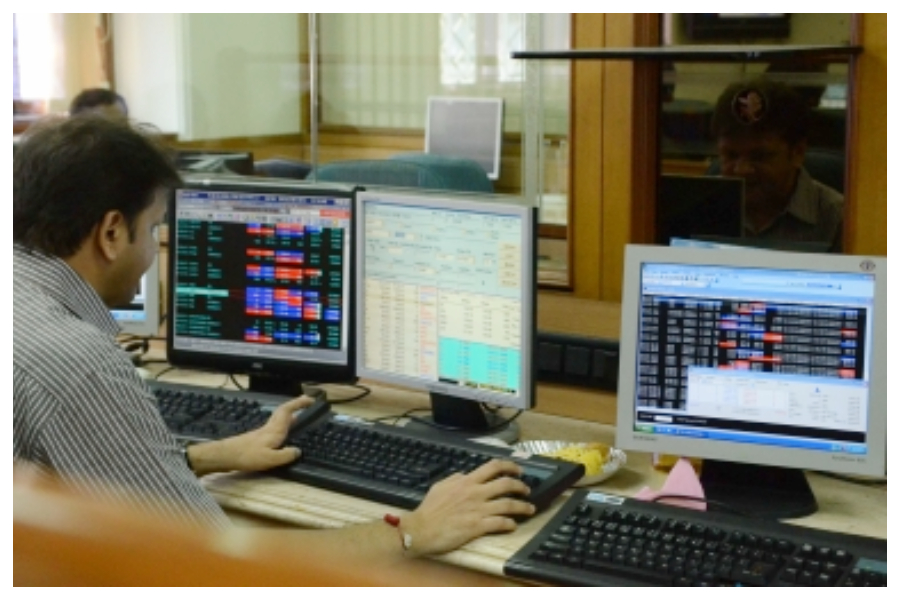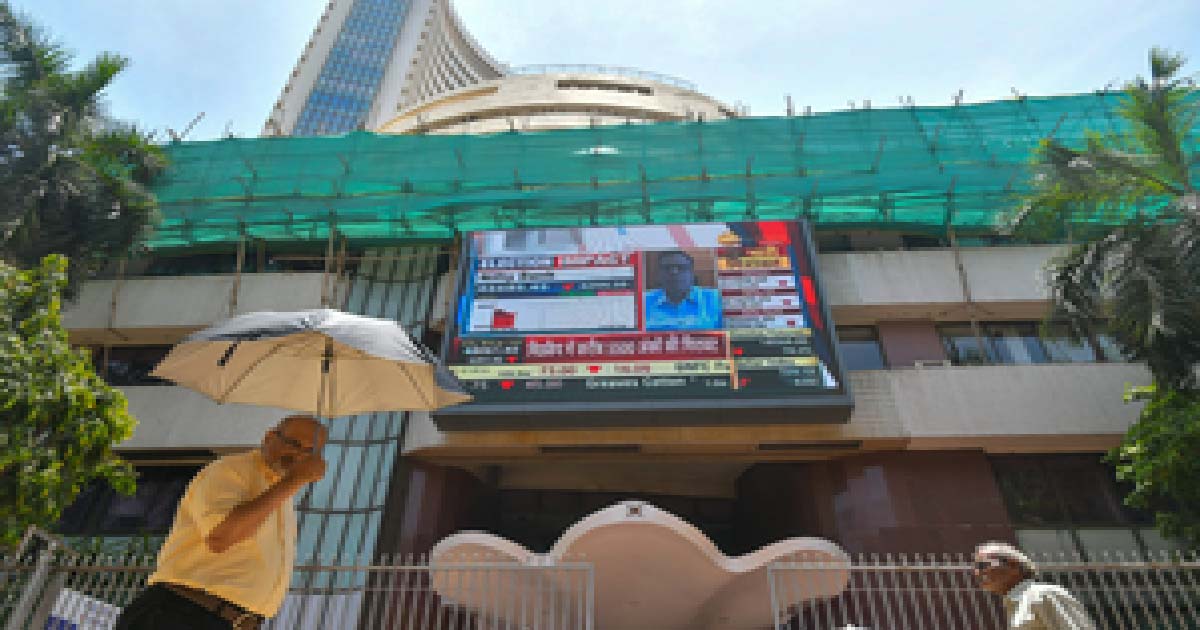Business
Even amid pullout, FIIs have raised their stake in certain companies

Foreign investors pulling out money from the Indian equity segment had made several headlines in the recent months.
Pulling out over $42 billion or Rs 3.26 lakh crore from the Indian markets in the last eight months, foreign investors have been net-sellers in the Indian market during these straight months.
FPIs have been selling across the board, though with some sectors seeing more pressure and some others less.
The underlying reason behind the pullout is that the stock market has been witnessing significant volatility amid tightening of monetary policy actions through key lending rates hike to address rising inflation and geopolitical tensions. Rising interest rates are typically a deterrent to economic growth as it raises lending costs of the industries.
That said, there are some large stocks where the foreign institutional investors have raised their stakes and they are ITC, Sun Pharma, ONGC, NTPC, PowerGrid and JSW Steel, said Sunil Damania, Chief Investment Officer at MarketsMojo.
FIIs’ stake in these companies rose 2 per cent, 0.9 per cent, 1.04 per cent, 0.2 per cent, 1.16 per cent, and 0.37 per cent, respectively, during the January-March quarter.
Besides, auto sector is doing well in this falling market and it’s quite likely stronger hands like FIIs too may be participating in this upmove and statistically, there are 3 stocks among Nifty 100 space where in last 4 quarters had consistent rise in foreign investors stake, said Siddarth Bhamre, Head of Research at Religare Broking,adding that those stocks are IOC, Siemens, and NTPC.
Asked if this is not the right time to invest in the stock market, which are the other safe asset options, Bhamre said equity always offers good investment opportunities in any market condition.
“As we highlighted above, many names among large cap spaces gave positive returns even in falling markets and these names are not from defensive sectors. In the current market scenario, only the dollar is doing well. Rising interest rates aka rising bond yields are taking bond prices down, commodities are correcting, real estate has liquidity issues, and prices are just stable not increasing, FD rates are still not attractive. So equity remains the asset class to be in but unlike the bull market not everything will go up and one will have to be very selective.”
In the small size company space, Globus Power, Kiri Industries, Restaurant Brand, Brightcom Group, Calcom Vision, Celebrity Fash, Axita Cotton, Lemon Tree Hotel, Indiabull Real Estate, and Camlin Fine are some of the stocks where FIIs raised their stakes, Damania said. Among them, Globus Power saw the highest rise in stake at 18 per cent.
“For investors who are not fully invested or who have raised cash in the recent past by booking profits, these times provide an opportunity to gradually raise the equity portion of their portfolio. While shortlisting investable stocks, one will have to be careful of not having exposure to sectors or stocks that have been derated due to very high valuations or very high financial forecasts that seem difficult to achieve,” said Deepak Jasani, Head of Retail Research at HDFC Securities, to a query on what must investors do amidst this volatility.
Also, stocks that did well due to commodity uprun over the last one odd year need to be examined closely for sustainability of earnings, while stocks that could see a feeble or elongated recovery also need to be avoided, he added.
Upon markets being in the negative territory, retail investors will refrain from making large new commitments in the markets except to average their holdings or to top up their equity portion in some favoured stocks, he said.
Business
PNB declares Rs 2,434 crore alleged loan fraud against former promoters of Srei firms

New Delhi, Dec 27: Punjab National Bank (PNB) has declared a Rs 2,434 crore alleged loan fraud by the former promoters of Srei Equipment Finance and Srei Infrastructure Finance.
In a late evening exchange filing, the state-run PNB said that “Pursuant to the applicable provisions of SEBI (LODFR) Regulations, 2015 and the Bank’s Policy for determining materiality of events/information required to be reported to the Stock Exchanges, it is hereby informed that the bank has reported borrowal fraud to RBI against the erstwhile promoters of Srei Equipment Finance and Srei Infrastructure Finance”.
PNB said that of the total fraudulent borrowings, Rs 1,240.94 crore is related to Srei Equipment Finance and the remaining Rs 1,193.06 crore is related to Srei Infrastructure Finance.
The public sector lender also said it has 100 per cent provisions for these loans. The bank said the declaration of these two accounts as frauds is based on a forensic audit, which pointed to irregularities such as loans to connected parties and potential evergreening of loans.
However, Srei group has challenged the forensic audit report as the basis for the fraud classification, noting the matter is subjudice.
Other banks such as Punjab & Sind Bank, Bank of Baroda, and Union Bank of India have also earlier declared a loan fraud in connection with Srei companies.
The Srei group has been undergoing an insolvency resolution process since 2021, and the National Company Law Tribunal has approved a resolution plan submitted by the National Asset Reconstruction Company in 2023. The Srei group was sent to the NCLT by the Reserve Bank in October 2021 after it had found governance issues and defaults and the regulator superseded the boards of Srei Infrastructure Finance and Srei Equipment Finance.
In February 2023, NARCL emerged as the successful bidder for SIFL and SEFL which together owed Rs 32,750 crore to lenders. NARCL won the bid in February 2023, got the NCLT approval in August 2023, and finalised the acquisition by January 2024.
Business
India 2nd largest mobile manufacturing country in the world: Minister

New Delhi, Dec 27: India has ramped up electronics production six-fold and is the second largest mobile manufacturing country in the world, Union Minister of Electronics and Information Technology Ashwini Vaishnaw said on Saturday.
In multiple posts on social media platform X, Vaishnaw said that the country has increased electronic exports eightfold over the past 11 years, mainly driven by policy support from the Production Linked Incentive Scheme.
The PLI scheme for Large Scale Electronics Manufacturing has attracted over Rs 13,475 crore in investment and helped achieve production of about Rs 9.8 lakh crore in the electronics sector, driving manufacturing, jobs, and exports, he said.
Vaishnaw highlighted that “over 1.3 lakh jobs were created in the last five years and that electronics is now India’s third‑largest export category, climbing from seventh place”.
He said the country was initially focusing on finished products, but the Electronics Component Manufacturing Scheme supported a shift to “building capacity for modules, components, sub-modules, raw materials, and the machines that make them.”
The Electronics Component Manufacturing Scheme has 249 applications representing Rs 1.15 lakh crore in investment, Rs 10.34 lakh crore in production, and creating 1.42 lakh jobs, the post said, adding it is the highest-ever investment commitment in India’s electronics sector, indicating industry confidence.
Vaishnaw also noted progress in the semiconductor sector, saying ten units have been approved, with three already in pilot or early production. The minister said that “fabs and ATMPs from India will soon supply chips to phone and electronics manufacturers”.
“Electronics manufacturing created 25 lakh jobs in the last decade. This is the real economic growth at the grassroots level,” the minister said.
“As we scale semiconductors and component manufacturing, job creation will accelerate. From finished products to components, production is growing. Exports are rising. Global players are confident. Indian companies are competitive. Jobs are being created. This is ‘Make in India’ impact story!” he noted.
Business
Indian stock market ends holiday-shortened week in positive terrain

Mumbai, Dec 27: Indian equity markets ended the week in a positive terrain, buoyed by expectations of stronger domestic demand, a favourable liquidity outlook and optimism over potential Fed policy easing in 2026, analysts said on Saturday.
The holiday-shortened week opened with a bullish undertone; however, momentum tapered off as the days progressed.
On Friday, Sensex closed at 85,041.45, slipping 367.25 points or 0.43 per cent. Nifty also ended in the red, falling 99.80 points or 0.38 per cent to settle at 26,042.30.
According to market watchers, the year-end lull kept trading largely range-bound, with hopes for a Santa Claus rally diminishing amid the absence of fresh catalysts, limited progress in US–India trade talks, and caution ahead of the upcoming earnings season.
“Sectoral trends were mixed, marked by selective profit booking across most segments, while metals, FMCG, and media stocks offered notable resilience,” said Vinod Nair, Head of Research, Geojit Investments Ltd.
Nifty 50 ended the week at 26,042, continuing to respect its long-term rising channel on the daily chart. The index remains comfortably above the 20-day EMA cluster, preserving the medium-term bullish structure, said analysts, adding that as long as Nifty sustains above the 26,000–25,900 support zone, the overall bias remains positive.
On the domestic front, RBI’s liquidity interventions, such as open market operations and a USD/INR buy–sell swap, helped stabilise the rupee, though persistent FII outflows continued to weigh on sentiment.
Meanwhile, gold advanced on safe-haven demand, while crude prices hovered near multi-year lows, though U.S. steps to tighten pressure on Venezuelan oil shipments could exert upward pressure in the near term
Looking ahead, market sentiment is likely to stay cautious as investors brace for the upcoming earnings season while remaining attuned to global developments and currency movements, said analysts.
Attention will also turn to next week’s data releases, including India’s industrial and manufacturing output figures, manufacturing PMI, and the US FOMC minutes, said Nair.
-

 Crime3 years ago
Crime3 years agoClass 10 student jumps to death in Jaipur
-

 Maharashtra1 year ago
Maharashtra1 year agoMumbai Local Train Update: Central Railway’s New Timetable Comes Into Effect; Check Full List Of Revised Timings & Stations
-

 Maharashtra1 year ago
Maharashtra1 year agoMumbai To Go Toll-Free Tonight! Maharashtra Govt Announces Complete Toll Waiver For Light Motor Vehicles At All 5 Entry Points Of City
-

 Maharashtra1 year ago
Maharashtra1 year agoFalse photo of Imtiaz Jaleel’s rally, exposing the fooling conspiracy
-

 National News1 year ago
National News1 year agoMinistry of Railways rolls out Special Drive 4.0 with focus on digitisation, cleanliness, inclusiveness and grievance redressal
-

 Maharashtra1 year ago
Maharashtra1 year agoMaharashtra Elections 2024: Mumbai Metro & BEST Services Extended Till Midnight On Voting Day
-

 National News1 year ago
National News1 year agoJ&K: 4 Jawans Killed, 28 Injured After Bus Carrying BSF Personnel For Poll Duty Falls Into Gorge In Budgam; Terrifying Visuals Surface
-

 Crime1 year ago
Crime1 year agoBaba Siddique Murder: Mumbai Police Unable To Get Lawrence Bishnoi Custody Due To Home Ministry Order, Says Report












